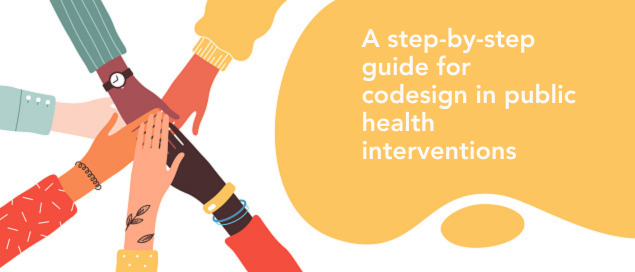Clarissa Hsu, PhD
Biography
Medical anthropologist Clarissa Hsu, PhD, has been doing Kaiser Permanente research since 2001, and became an official member of the faculty in 2011. She conducts research using a holistic approach that unites the cultural, social, and political factors that shape health and health care. Dr. Hsu was one of the first researchers to receive funding from the national Patient-Centered Outcomes Research Institute (PCORI), which supports studies on issues that are a high priority for patients, caregivers, and clinicians. PCORI-funded research follows an innovative model, including patient input at all steps in the research process. Dr. Hsu and her team christened her PCORI project LINCC: Learning to Integrate Neighborhoods and Clinical Care.
The LINCC project designed, piloted, and evaluated a new primary care role: connecting patients to community resources. This new community resource specialist role was spread throughout Kaiser Permanente Washington, with a robust evaluation and implementation support co-led by Dr. Hsu through KPWHRI’s Center for Accelerating Care Transformation. LINCC also resulted in the creation of valuable health care resources, including an article on having patients as co-investigators, as well as a guide and set of care-design templates for engaging a cohort of patients in co-designing care.
Dr. Hsu is also at the forefront of other prevalent health issues, working to document, design, evaluate, and disseminate new approaches and best practices. She seeks to help chronic pain patients taper off and find alternatives to opioids. She also works to improve how care delivery systems interact with patients and family members around sensitive and complex topics such as dementia diagnoses, use of antipsychotics in youth, blood pressure diagnosis and control, cannabis use, and childhood vaccinations.
Dr. Hsu is an affiliate professor at the University of Washington School of Public Health.
Research interests and experience
-
Clinical Quality Improvement
Primary care; ambulatory care; preventive medicine; health care design and workforce issues; addressing social determinants of health -
Patient-Centered Outcomes Research/Patient-Centered Care
Patient engagement and partnership; shared decision making -
Chronic Pain
Using safe and effective methods to treat pain, supporting patients to minimize opioid use, cannabis use, communication about pain -
Addressing Social Risks in Clinical Settings
Screening and providing support for patients with social needs -
Complementary & Integrative Health
Patient experiences with complementary and alternative medicine
-
Evaluation Science and Implementation and Dissemination Science
Qualitative and mixed-methods approaches
-
Healthy Communities
Clinic-community linkages; preventive medicine; addressing social determinants of health
-
Addictions
Prevention and treatment
-
Social Determinants of Health
-
Chronic Illness Management
-
Vaccines & Infectious Diseases
Recent publications
Coleman K, Wagner EH, Ladden MD, Flinter M, Cromp D, Hsu C, Crabtree BF, McDonald S. Developing emerging leaders to support team-based primary care. J Ambul Care Manage. 2019 Jun 4. doi: 10.1097/JAC.0000000000000277. [Epub ahead of print]. PubMed
Hertel E, Cheadle A, Matthys J, Coleman K, Gray M, Robbins M, Tufte J, Hsu C. Engaging patients in primary care design: An evaluation of a novel approach to codesigning care. Health Expect. 2019 May 27. doi: 10.1111/hex.12909 [Epub ahead of print] PubMed
Eaves ER, Hsu CW, DeBar LL, Livingston CJ, Ocker LE, McDonald SJ, Dillon-Sumner L, Ritenbaugh C. Whole systems within whole systems: the Oregon health plan's expansion of services for back and neck pain. J Altern Complement Med. 2019 Mar;25(S1):S61-S68. doi: 10.1089/acm.2018.0431. PubMed
Hsu C, Gray MF, Murray L, Abraham M, Nickel W, Sweeney JM, Frosch DL, Mroz TM, Ehrlich K, Johnson B, Reid RJ. Actions and processes that patients, family members, and physicians associate with patient- and family-centered care. BMC Fam Pract. 2019 Feb 25;20(1):35. doi: 10.1186/s12875-019-0918-7. PubMed
Figueroa Gray M, Hsu C, Kiel L, Dublin S. Getting through the day: a pilot qualitative study of U.S. women's experiences making decisions about anti-nausea medication during pregnancy. BMC Pregnancy Childbirth. 2018;18(1):475. doi: 10.1186/s12884-018-2093-6. PubMed
Hsu C, Hertel E, Johnson E, Cahill C, Lozano P, Ross TR, Ehrlich K, Coleman K, BlueSpruce J, Cheadle A, Matthys J, Chapdelaine M, Gray M, Tufte J, Robbins M. Evaluation of the Learning to Integrate Neighborhoods and Clinical Care project: findings from implementing a new lay role into primary care teams to address social determinants of health. Perm J. 2018; 22:18-101.Published online 2018 Oct 22.doi: 10.7812/TPP/18-101. PubMed
Hsu C, Evers S, Balderson BH, Sherman KJ, Foster NE, Estlin K, Levine M, Cherkin D. Adaptation and implementation of the STarT back risk stratification strategy in a US health care organization: a process evaluation. Pain Med. 2018 Sep 28. pii: 5110194. doi: 10.1093/pm/pny170. [Epub ahead of print]. PubMed
Blasi PR, Cromp D, McDonald S, Hsu C, Coleman K, Flinter M, Wagner EH. Approaches to behavioral health integration at high performing primary care practices. J Am Board Fam Med. 2018;31(5):691-701. doi: 10.3122/jabfm.2018.05.170468. PubMed
Cherkin D, Balderson B, Wellman R, Hsu C, Sherman KJ, Evers SC, Hawkes R, Cook A, Levine MD, Piekara D, Rock P, Estlin KT, Brewer G, Jensen M, LaPorte AM, Yeoman J, Sowden G, Hill JC, Foster NE. Effect of Low Back Pain Risk-Stratification Strategy on Patient Outcomes and Care Processes: the MATCH Randomized Trial in Primary Care. LID - 10.1007/s11606-018-4468-9 [doi] J Gen Intern Med. 2018 May 22. pii: 10.1007/s11606-018-4468-9. doi: 10.1007/s11606-018-4468-9 [Epub ahead of print] PubMed
Hartzler AL, Tuzzio L, Hsu C, Wagner EH. Roles and functions of community health workers in primary care. Ann Fam Med. 2018 May;16(3):240-245. doi: 10.1370/afm.2208. PubMed
ENSPIRE Codesign Playbook

Develop a codesign project and process with insights from the ENSPIRE study.
Healthy findings blog

Accelerating qualitative research with Rap-GAP
Clarissa Hsu and Jess Mogk share a new way to fast-track insights from qualitative data.
Research roundup

What's new in cannabis use research?
Use in pregnancy and screening in primary care studied by KPWHRI’s Kiel, Matson, and Lapham.
research

LINCC-ing patients with community resources
Study ends but benefits for Kaiser Permanente members continue — thanks to a new support role in the regions’ clinics, writes Dr. Clarissa Hsu.
Resources
Partnering with Patients as Equals in Co-Designing Primary Care: Examples and Tools from the LINCC Project
New findings

Overcoming undervaccination
Clarissa Hsu, PhD, asked parents why they decline or delay vaccinating their children to explore ways to overcome barriers to getting vaccinated.



